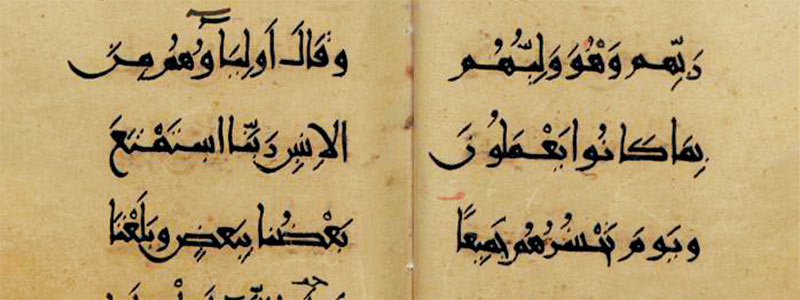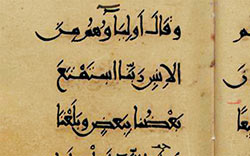Abu’l-Hasan Ahvāzi, known as Ebn Bavvāb, still stands as one of the most famous and outstanding calligraphers of his time. In addition to his considerable skill in calligraphy, he was an adept master of poetry, painting, and design. Since (unlike many of his peers) he did not involve himself in politics, he was able to create many works of art, though very few of them survive to the present day. Bahā’-al-Dawla, son of ‘Azod-al-Dawla Deylami, appointed him to the position of head librarian and charged him with the care and oversight of his library in Shiraz. In addition to his exceptional skills in calligraphy and design, he was also a master of Arabic literature, famously writing long poems about calligraphy in Arabic in the form of qasida Rā’iyyah.
Ebn Bavvāb was the student of Mohammad b. Asad and Mohammad b. Samsāni, and himself trained many students, such as Abu’l-Hasan Mahyar Deylami, ‘Abd-Allāh b. Shaqi-al-Layl, Mohammad b. ‘Abd-al-Malek, Zaynab Shohdah, Abu Yusof Mohammad b. Esmā‘il Golpāyagāni, Abu’l-Fazl Khāzen Dinavari, ‘Abd-al-Rahim, Abu-Bakr Kāteb, and As‘ad b. Abu’l-Ma‘āli.
One of his most precious works is a Qur’an written in the Rihān script (dated 391 AH/1001 CE) that is housed in the Chester Beatty Library in Dublin, as well as his Qur’an written in the Iranian Kufic script (dated 392 AH/1002 CE), which is kept in the Mar‘ashi Najafi Library in Qom.
Ebn Bavvāb died in 1022 CE.

